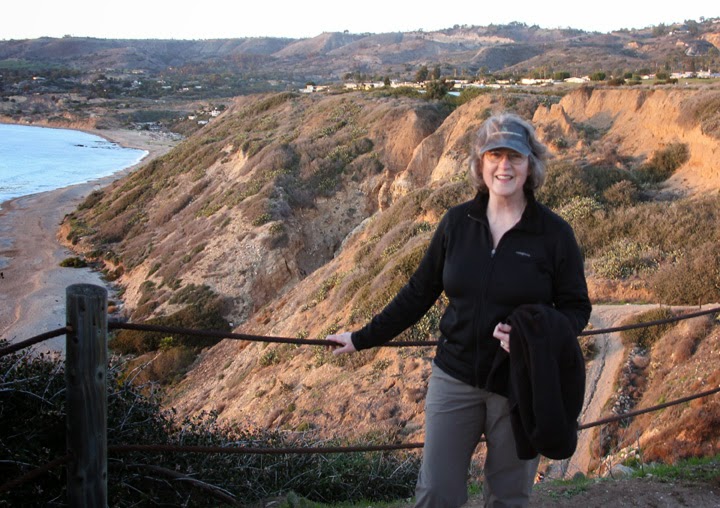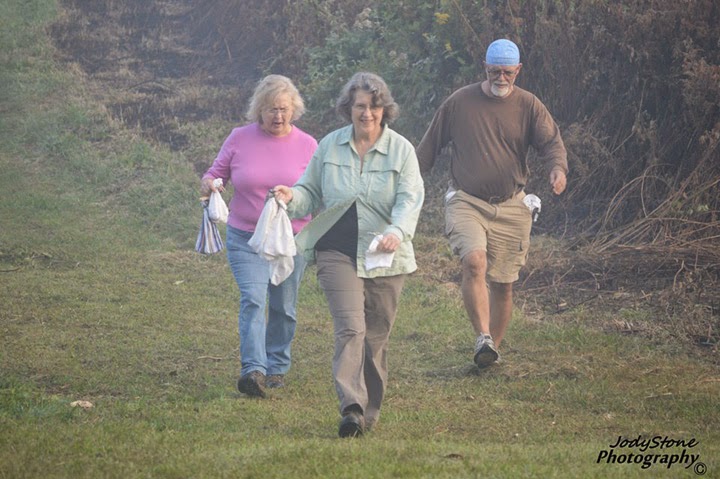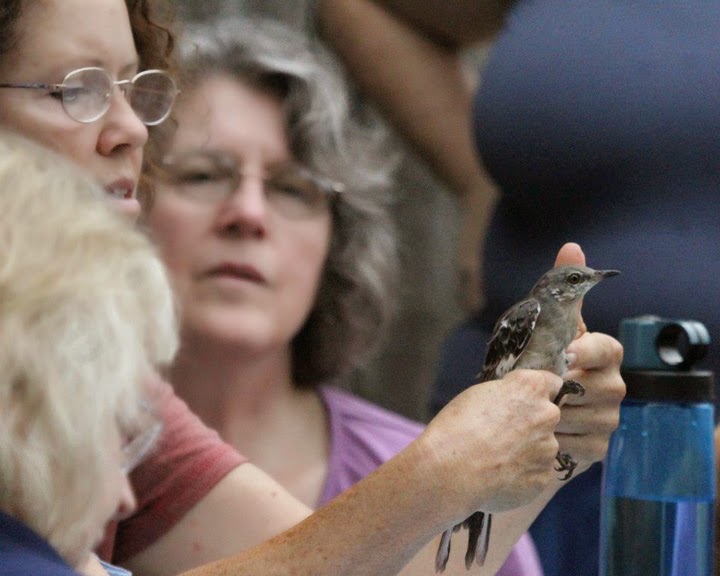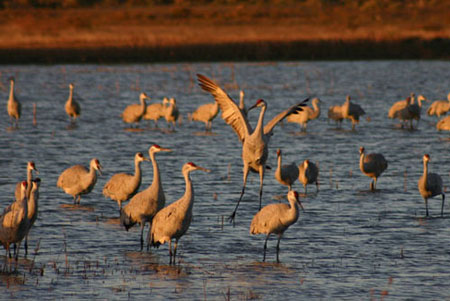A busy morning of banding at Tennessee's Seven Islands State Birding Park resulted in 66 birds banded and 10 recaptures for a total of 76 birds processed by Mark Armstrong and his banding team on September 6th.
Eleven species were captured including a lovely female American Redstart shown below being held in a bander's grip.. The female of the species has a gray head with olive back and wings. She is beautifully marked with bright yellow areas and has a white underbelly. The male of the species is black and marked with reddish-orange.
Above, Mark places a band on a female American Redstart, and below, a look at the yellow in her striking tail.
Redstarts, a species member of the wood warbler family, are frequently seen fanning their tails while foraging as illustrated in my sketch below.
The banding station is set up on the front porch of an historic farm house on the Seven Islands park property. Banding team members arrived at 6:30 a.m. to erect the nets before daylight.
The first "net run" occurs at 7:30 a.m. when members of the team check all of the nets to remove birds that have been captured. Each bird is placed in a cloth bag and held until processed at the banding station. Nets are checked at regular intervals through out the morning until the nets are taken down, usually at 11:00 a.m.
Above, Billie Cantwell (center) and Mark Armstrong process birds.
Birds are held in soft cloth bags that help to keep them calm while waiting to be processed.After the band is attached to the bird's leg, the bird is examined for health and age. Measurements of the wing and tail are taken, the skull and belly are examined, and the bird is weighed before release. The information recorded helps to track the health and changes in the bird population at Seven Islands, as well as, contributes to grassland research.

Above, Mark opens a band before placing it on the leg of a Field Sparrow. 25 field sparrows were banded, along with 3 recaptured for a total of 28 processed. Field Sparrows are one of our year-around grassland species. The second most common species was the Indigo Bunting for a total of 15 banded.
Above and below, Billie Cantwell examines a female Blue Grosbeak. This bird was recaptured and originally banded in May of this year. Below, Mark and Billie discuss the molting pattern of the feathers to affirm the bird's age. Female Blue Grosbeaks are brown with a hint of blue in their shoulder feathers, while the males are bright blue with orange bars.
Below, Gar Secrist brings a bird back from the net, accompanied by park visitors. Visitors are welcome to observe the banding process.
Mark measures the wing of a Brown Thrasher, above, one of the largest birds captured for the day. The size and personality of a thrasher makes it a fun bird for children to experience.
Richard Secrist shows a young visitor the bright yellow eyes of the thrasher. Brown Thrashers have large curved beaks and beautiful rust plumage with a cream breast and belly with rust spots. Very striking birds.
Another highlight of the morning was the capture of a young hummingbird. Billie Cantwell banded the juvenile and recorded the details.
Above and below, she measures its wing and beak.
With a magnifying loop, she checks for grooving in the juvenile's beak. Grooving helps the bander to age the bird. The grooving indicates growth in the beak, a characteristic of juveniles.
For release, Billie places the hummingbird in the hand of one of our visitors.
An Eastern Kingbird was the second largest bird captured at the net. Above, Mark is measuring her tail. A flycatcher species that is always fun to see at close range, kingbirds breed in eastern North America and overwinter in South America,
Situated on more than 410 acres along the French Broad River, Seven Islands State Birding Park includes raparian zones (where land and water meet) and open grassland habitat planted with native grasses, wildflowers, shrubby fruit-bearing plants, and trees, providing favored habitat and food sources for many grassland species and migrating warblers.
Mark Armstrong is a Master Bander of hummingbirds and songbirds. Billie Cantwell is a banding apprentice and past president of the Knoxville Chapter of the Tennessee Ornithological Society.Visit my previous posts on bird banding.
Blue Grosbeak
Bird Banding at Seven Islands State Birding Park
Knoxville Chapter, Tennessee Ornithological Society
Visit the Knoxville Chapter of TOS on Facebook
Seven Islands State Birding Park
Seven Islands Wildlife Refuge now Seven Islands State Birding Park

































